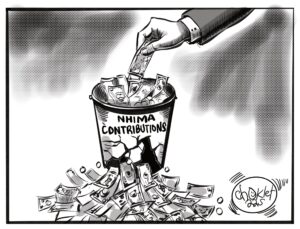ECONOMIST Chibamba Kanyama says government should not feel comfortable that it no longer needs an IMF programme given the high copper prices currently obtaining because that is only a small part of the solution to Zambia’s debt problem.
In a statement, Tuesday, Kanyama noted that with the appreciation of the Kwacha, it was expected that government would have it easier to resume debt repayments supported by the strong copper prices.
“The strong copper prices and a possible programme with the International Monetary Fund (IMF) remain Zambia’s feasible panacea to dismantling the external debt arrears that stood at about US$841 million as at December 2020. The total debt arrears should now be plus- minus US $1 billion given that we have defaulted twice on two coupon payments. The figure is contrary to what is speculated in other media stating that this figure is the total arrears arising from the recent defaults. That is simply not possible,” he said.
“With the appreciation of the Kwacha, it is expected the Government will have it easier to resume debt repayments buoyed by the strong copper prices that have stood at over US$9000/mt since 2020. The positive movements in copper prices have enabled the Central bank to earn reasonably healthy mineral royalties from the copper mining industry and has subsequently been able to sell about US$648 million to the market from January to July this year. The move has somewhat defended the Kwacha, of course, supported by other demand and supply factors, particularly the monetary policy rate that was raised from 8 percent to 8.5 percent in February this year.”
Kanyama, however, stated that higher copper prices would not be enough to help offset Zambia’s debt, insisting that an IMF programme would also be key.
“There is a big question coming from external investors who fear that the strong copper prices will lead to a comfort stage where authorities will no longer want a program with the IMF. On the contrary, the strong copper prices will trigger a number of things. First, the strong prices will strengthen government support for the program because Zambia has obligations with Eurobond holders starting next year 2022. As such, we require improved cash flows to service these bonds,” he said.
“The higher metal prices will, therefore, accelerate Zambia’s build up for sovereign wealth such as via a sinking fund that has not materialized in the previous two years. This will be supplemented by the IMF program which is badly needed for sentiment and above all, key investment flows. The country needs about US$3 billion worth of flows in the veins of the economy. This will not be achieved by higher copper prices alone but by an IMF package which is strongly tied to being a precursor to successful debt restructuring initiatives led by Lazard.”
Meanwhile, Kanyama stated that there was a need to review the mining structure affecting the mining sector in Zambia so as to unlock investment in mining.
“The impact of this will be an improvement in Zambia’s credit rating and that is the kind of position we need to be in to service our debts without placing undue pressure on the local economy. Debt restructuring with the bond holders and Chinese creditors is critical for unlocking access to capital markets. As long as this does not happen, ratings will remain default for foreign currency, and this could wane sentiment further. However, as things stand, the Bank of Zambia is in a better position to intervene in the market to achieve price stability. What we need post-election is continued high copper prices, greater offshore interest in Kwacha paper and improved sentiment ahead of a possible IMF package. In addition, there is a need to review the mining structure affecting the mining sector so as to unlock investment in mining. That is the best way we can expand production so as to leverage the high copper prices,” said Kanyama.
























